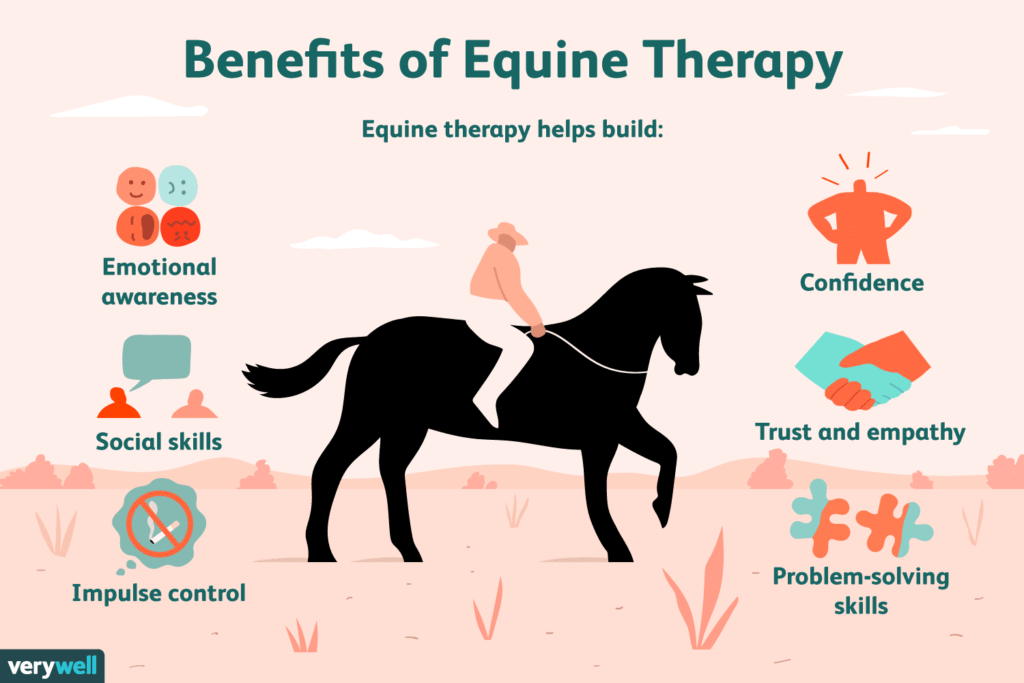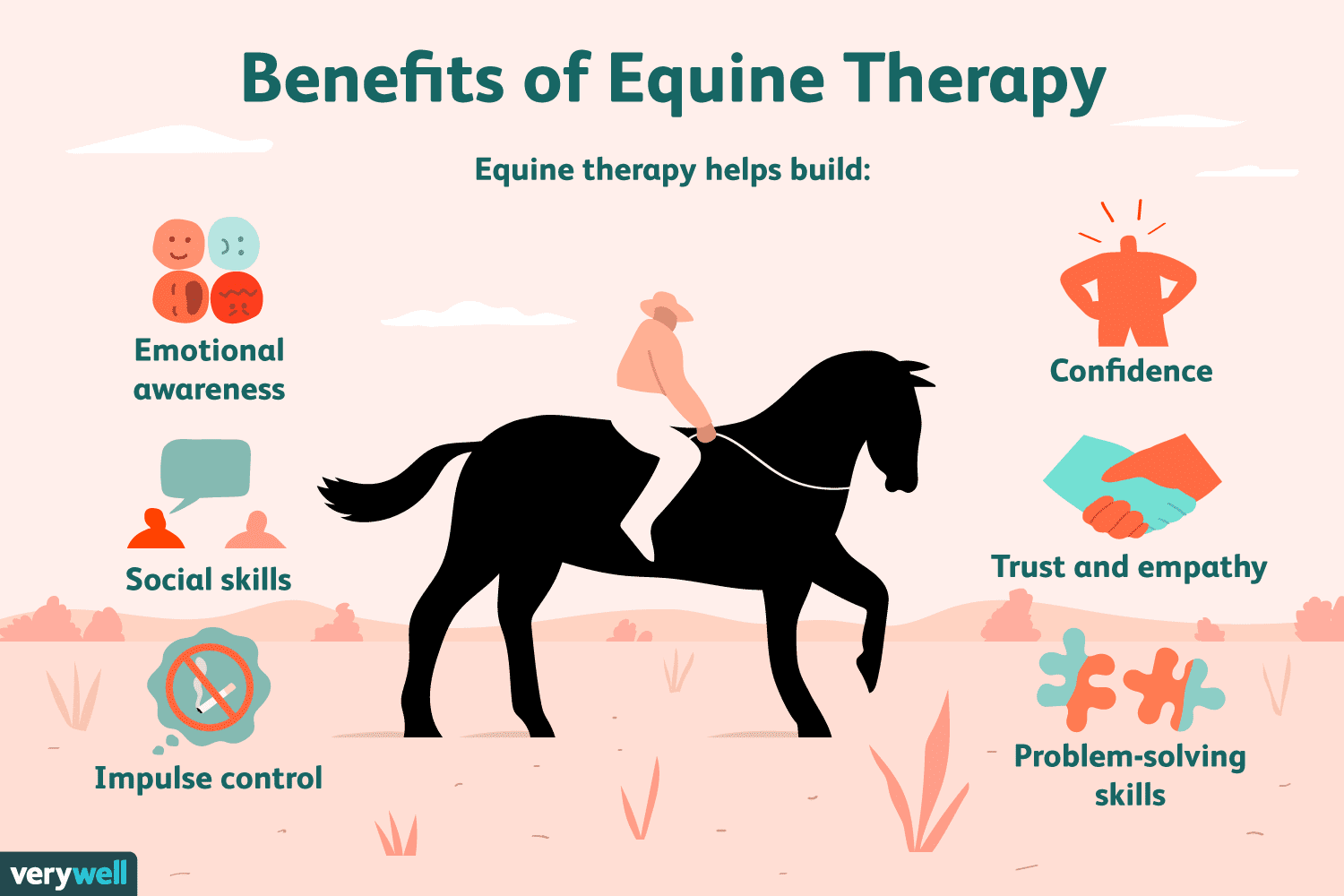Have you ever wondered about the connection between horseback riding and horse therapy? It may seem like an unlikely pair, but there’s actually a deep and meaningful link between the two. In horse therapy, also known as equine-assisted therapy, horses are used as a form of treatment for various physical, mental, and emotional challenges. It’s a fascinating subject that can truly open your eyes to the power of these magnificent creatures.
In my blog post, I’ll delve into the details of how horseback riding and horse therapy go hand in hand. You’ll discover the therapeutic benefits that come from being around horses, such as improved balance, coordination, and muscle tone. We’ll also explore how horses can help individuals with mental health conditions like anxiety and PTSD, providing a calming and grounding presence. Along the way, I’ll share stories and anecdotes that highlight the profound impact that horseback riding and horse therapy can have on people’s lives. So, sit tight and get ready to learn more in my upcoming article on the connection between horseback riding and horse therapy.

The Connection between Horseback Riding and Horse Therapy
Horseback riding is not merely a recreational activity; it has proven to be a therapy with remarkable benefits for individuals with physical, emotional, and cognitive disabilities. Known as horse therapy or equine-assisted therapy, this approach involves utilizing horses and their movements to support individuals in their healing process. The bond between horse and rider, the rhythmic and gentle motions, and the connection with the animal can bring about transformative changes. In this article, we will explore the connection between horseback riding and horse therapy, shedding light on the profound positive impacts it can have on individuals of all ages.
The Basis of Horse Therapy
Horse therapy operates on the principle that animals have a unique ability to connect with humans and provide emotional support. The movements of a horse can simulate the natural walking motion of humans, activating the rider’s muscles and joints in a manner that encourages improvement in balance, coordination, and sensory integration. Additionally, horses possess a calming presence and are highly intuitive, which can enhance emotional well-being and communication skills.
Physical Benefits of Horse Therapy
Engaging in horseback riding as a therapeutic activity can yield numerous physical benefits. The rhythmic motion of the horse stimulates the rider’s muscles, promoting strength, endurance, and coordination. The horse’s gait also mimics a human walking pattern, facilitating improvements in posture, balance, and core stability. Individuals with physical disabilities, such as cerebral palsy, spinal cord injuries, or amputations, can greatly benefit from horse therapy as it aids in enhancing their range of motion, flexibility, and overall physical fitness.
Emotional Well-being and Psychological Benefits
The bond formed between a horse and its rider can be exceptionally therapeutic for individuals with emotional or psychological disorders. Interacting with horses promotes the release of endorphins, neurotransmitters that create feelings of happiness and relaxation. This can help alleviate symptoms of depression, anxiety, and stress. Moreover, the unconditional acceptance and non-judgmental nature of horses create a safe and supportive environment for individuals to express their emotions, build self-confidence, and develop trust.
Cognitive Benefits and Developmental Progress
In addition to physical and emotional advantages, horse therapy also has significant cognitive benefits, particularly for individuals with developmental disabilities. The act of horseback riding requires riders to follow instructions, remember sequences of movements, and make decisions based on the horse’s reactions. These cognitive tasks help improve problem-solving skills, memory, attention span, and overall cognitive functioning. Moreover, horse therapy can assist individuals with learning disabilities, autism spectrum disorder, and attention deficit hyperactivity disorder (ADHD) in enhancing their focus, social interaction, and sensory processing abilities.
An Inclusive and Accessible Therapy
One of the key strengths of horse therapy is its inclusivity. It is an activity that can be modified and adapted to meet the needs of individuals with various disabilities and limitations. Specially trained therapists and instructors ensure that the horses, riding equipment, and therapeutic environment are accessible to all. From mounting ramps and specially-designed saddles to gentle horses accustomed to working with different riders, horse therapy strives to provide a safe and comfortable experience for everyone.
Equine-Assisted Activities and Therapy
Horse therapy encompasses both equine-assisted activities and equine-assisted therapy, each serving different purposes. Equine-assisted activities, such as horseback riding lessons, focus on developing riding skills, recreational enjoyment, and confidence-building. These activities can be valuable for individuals seeking personal growth, physical fitness, or a newfound hobby.
On the other hand, equine-assisted therapy involves structured sessions conducted by licensed therapists or certified professionals. These sessions utilize the horse’s movements and interactions to achieve specific therapeutic goals. Equine-assisted therapy can address a wide range of conditions, including but not limited to physical disabilities, emotional disorders, cognitive impairments, and behavioral challenges. A therapist typically designs individualized treatment plans and tailors the activities to meet the specific needs and goals of each participant.
Finding Horse Therapy Programs
If you are interested in exploring horse therapy for yourself or a loved one, it is essential to find a reputable program that meets your specific needs. Many equestrian centers, therapeutic riding associations, and equine therapy organizations offer horse therapy programs. When selecting a program, consider factors such as the qualifications and experience of the staff, the availability of certified instructors and therapists, the safety protocols in place, and the suitability of the program for your specific condition or goals.
Safety Considerations
While horse therapy can be highly beneficial, safety should always be a top priority. It is crucial to participate in horse therapy under the guidance of trained professionals who prioritize rider safety. Riding helmets should be worn at all times to protect against head injuries, and riding instructors should provide clear instructions on proper technique and horse handling. Additionally, horses should be well-trained, gentle, and accustomed to working with individuals with various disabilities.
The Transformative Power of Horse Therapy
When you engage in horse therapy, you embark on a transformative journey that goes beyond the physical and therapeutic benefits. The deep connection formed between horse and rider can instill a sense of joy, empowerment, and personal growth. Through the partnership with these majestic animals, you may discover newfound abilities, overcome challenges, and develop resilience. Horse therapy is more than just a therapeutic tool – it is a life-changing experience that brings healing, happiness, and hope.
In conclusion, horseback riding and horse therapy are interlinked in a profound and transformative way. Whether it be the physical benefits, emotional well-being, cognitive improvements, or inclusivity, there is an undeniable connection between these two domains. By embracing the power of horses, individuals with disabilities or limitations can find solace, rehabilitation, and personal growth through horse therapy. So, saddle up, embark on this extraordinary journey, and let the therapeutic power of horses guide you towards a brighter future.
For more information on horseback riding, horse therapy, and related topics, visit horsebackridingdude.com.
